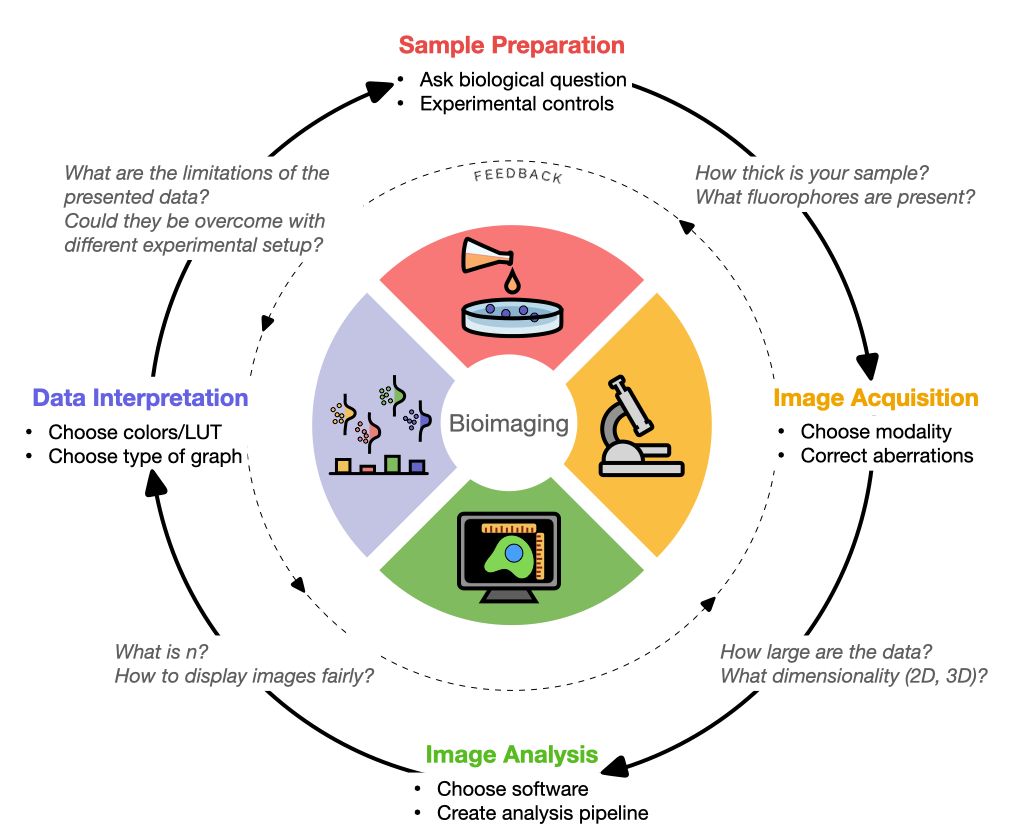Quantitative Bioimaging#
What do we mean by quantitative bioimaging?#
While microscopy was by necessity a qualitative science for most of its history, we now live in an era where microscope images can be used to precisely quantify observable phenotypes.
The ability to draw accurate quantitative answers from these experiments relies on certain best practices being followed. If one can confidently say “Yes” to each of the following 4 questions, one is likely to be able to quantify their sample.
Have I prepared my sample in a way that minimizes technical artifacts and lets me understand exactly which molecule(s) I am observing?
Have I conducted my microscopy so that I minimize technical artifacts and am in the quantitative range of the detector attached to my microscope?
Have I selected analysis metric(s) that truly answer my biological question and measured them in a way that minimizes technical artifacts?
Have I chosen appropriate statistical comparisons and data presentation approaches so that the distribution of my metric(s) can be fairly compared across samples, answering my biolgical question?
Answering each of these questions requires thought, expertise, and often a fair amount of trial and error; it can feel overwhelming to grapple with all the technical aspects and caveats present in a bioimaging experiment. These questions can be answered, however, though often not in a single pass - continuous optimization through multiple rounds of answering these questions is typically needed for best results.
The resources linked in this guide are designed to help a reader develop skills in each or all of these areas, helping them get the most from their microscopy data.

Fig. 2 The decision cycle of quantitative bioimaging 2 Reproduced from Senft and Diaz-Rohrer et al, A biologist’s guide to planning and performing quantitative bioimaging experiments.#
